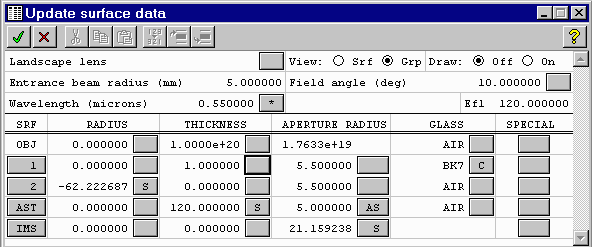
| Focal length: | 120 mm |
| f/number: | 12 |
| Half field of view: | 10 degrees |
| Wavelength: | 550 nm |
Use a paraxial angle solve on the second lens surface to control the focal length. Use a paraxial height solve on the last surface (AST) to set the image distance. Generate a plot of the starting lens.

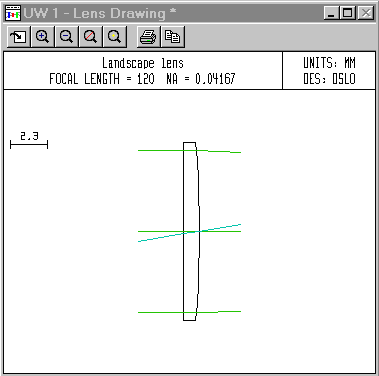
Use the menu choice Optimize - GENII Error function to select a generic merit function. Use the menu choice Optimize - Variables to generate a list of variables. Vary the curvature of surface 1 and the thickness of surface 2. You may also set variables using the buttons next to the entries of the surface data table.

Once the variables and merit function are defined, the Optimize - Iterate. menu entry becomes active. It brings up the iteration dialog below.
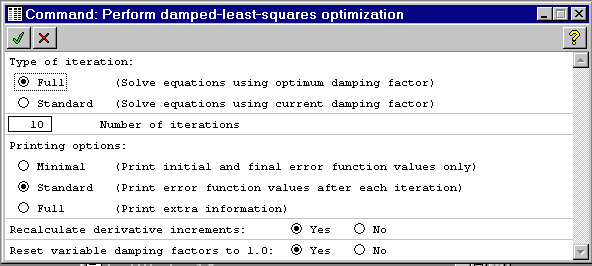
Accept the default values and click the check box. The results of the iteration are shown below:
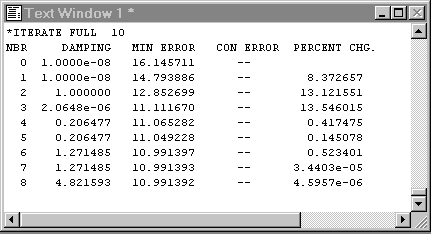
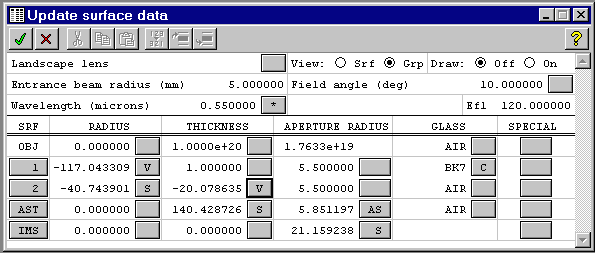
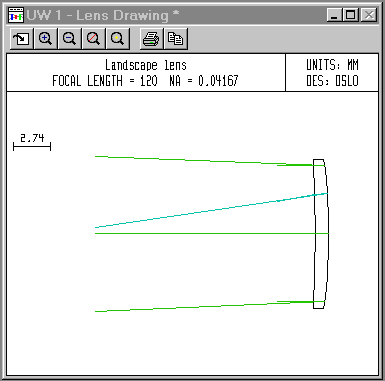
In our first attempt, the optimization converged to a front landscape lens. Suppose that we want a back landscape lens. We can manually change the distance to the stop to a positive number (say 20) and re-optimize. However, the program returned to approximately the original solution. We try again. Change the radius of the first surface to 120 and the distance to the stop to 20, which effectively flips the lens. An iteration cycle now finds the desired solution:
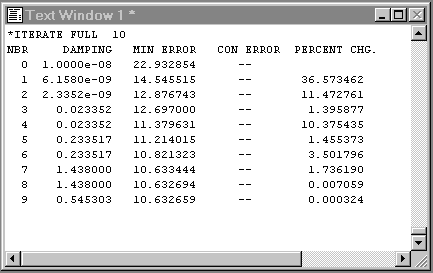
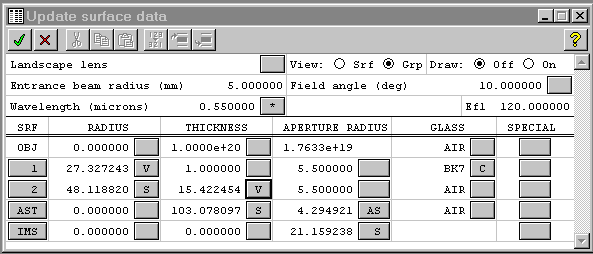
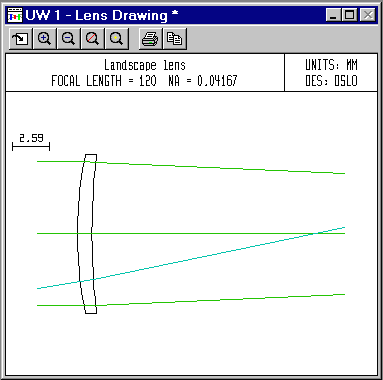
*PARAXIAL SETUP OF LENS APERTURE Entrance beam radius: 5.000000 Image axial ray slope: -0.041667 Object num. aperture: 5.0000e-20 F-number: 12.000000 Image num. aperture: 0.041667 Working F-number: 12.000000 FIELD Field angle: 10.000000 Object height: -1.7633e+19 Gaussian image height: 21.159238 Chief ray ims height: 21.159238 CONJUGATES Object distance: 1.0000e+20 Srf 1 to prin. pt. 1: -0.851555 Gaussian image dist.: 103.078097 Srf 3 to prin. pt. 2: -16.921903 Overall lens length: 16.422454 Total track length: 1.0000e+20 Paraxial magnification: -1.2000e-18 Srf 3 to image srf: 103.078097 OTHER DATA Entrance pupil radius: 5.000000 Srf 1 to entrance pup.: 18.848346 Exit pupil radius: 4.294921 Srf 3 to exit pupil: 1.4211e-14 Lagrange invariant: -0.881635 Petzval radius: -185.215374 Effective focal length: 120.000000
*SEIDEL WAVEFRONT ABERRATION COEFFICIENTS - WAVELENGTH 1
COEFFICIENTS IN WAVELENGTHS
W040 W131 W222 W220 W311
1.567364 1.892000 0.605462 2.210289 -8.564174
*SEIDEL ABERRATIONS SRF SA3 CMA3 AST3 PTZ3 DIS3 1 -0.082642 -0.024711 -0.007389 -0.116549 -0.037059 2 -0.000115 -0.000264 -0.000603 0.066190 0.150106 3 -- -- -- -- -- SUM -0.082757 -0.024974 -0.007992 -0.050360 0.113047
*SPOT SIZES BFR
FOCUS: -1.333680
GEO RMS Y GEO RMS X GEO RMS R DIFFR LIMIT CENTY CENTX
0.019034 0.019034 0.026918 0.008043 -- --
The spot size analysis, shown above, suggests that the best focus (minimum rms spot size) is found at dz = -1.334. Set this value in the lens data table, as shown below:
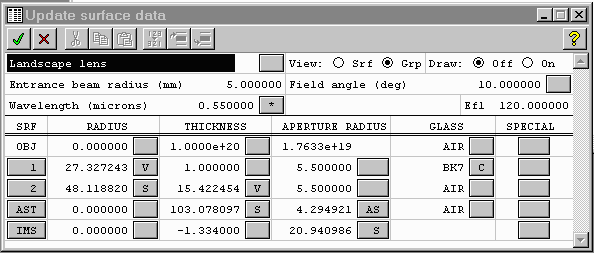
Finally a spot diagram analysis (with a maximum focus shift of 2 mm) gives the following results:
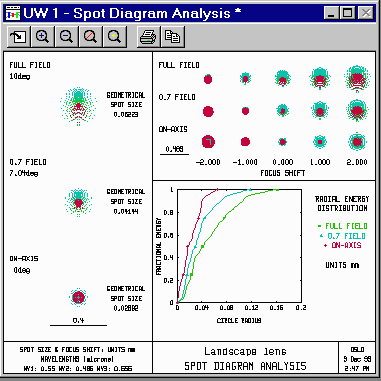
Maintained by John Loomis, last updated 9 Dec 1999